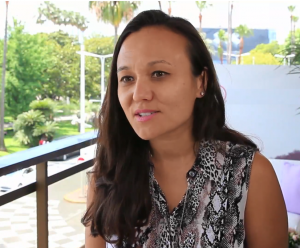This article was originally published by Beet.tv. View the interview video here.
Brands talking about how they have aligned with cause or purpose marketing were hard to ignore at this year’s Cannes Lions International Festival of Creativity. But there’s a difference between the two, and marketers should be prepared to commit a few years to purpose, according to OMD Global Chief Strategy Officer Chrissie Hanson.

Chrissie Hanson, Chief Strategy Officer, OMD Worldwide
“Brand purpose is so incredibly powerful and has the potential to do so much,” Hanson says in this interview with Beet.TV at the recent Cannes Lions International Festival of Creativity. “You look at the state of the world, the planet is in, there has never been a greater need for a complete overhaul of institutions, around politics and social and educational.”
Alluding to the “tons of panels” at Cannes centered on cause or purpose, Hanson draws a distinction between the two.
“Cause is often a reaction to something that is kind of negative. The question around purpose is how do you shift companies into a space where they are putting it right at their DNA. How do you act as a force for good and you don’t simply kind of badge it?”
While every brief that OMD sees is ultimately seeking to deliver better business outcomes, an understanding of what consumers care about shows that “the need for purpose is absolutely rising,” Hanson says.
She cites research showing that 33% of consumers will shift and buy from brands “that are doing better” while 50% will move to brands of parity “as long as they are reflecting of your values. You shift from one to another.”
To participate in the purpose space if it’s meaningful to a brand “There has to be a genuine commitment to it and all that it takes,” Hanson says.
It’s not uncommon for a client to have multiple projects or commitments already in play. “But the question is which ones are relevant to amplify. Which ones do you potentially communicate more and why. We start to look at where can you affect culture most effectively and also business outcomes and where do you have the greatest space to show your impact.”
One of the big hurdles is expectations, because aligning with a purpose for a year or less doesn’t cut it, according to Hanson.
“Some of these shifts, they take two to three years to have an effect because you are requiring a different set of behaviors to be at stake. You take the best of brand building, but you’re taking that to have a different impact.”


